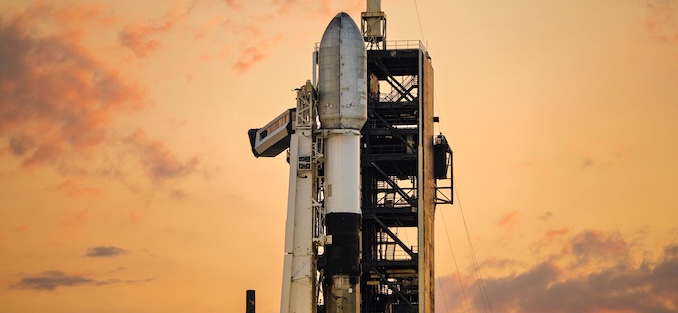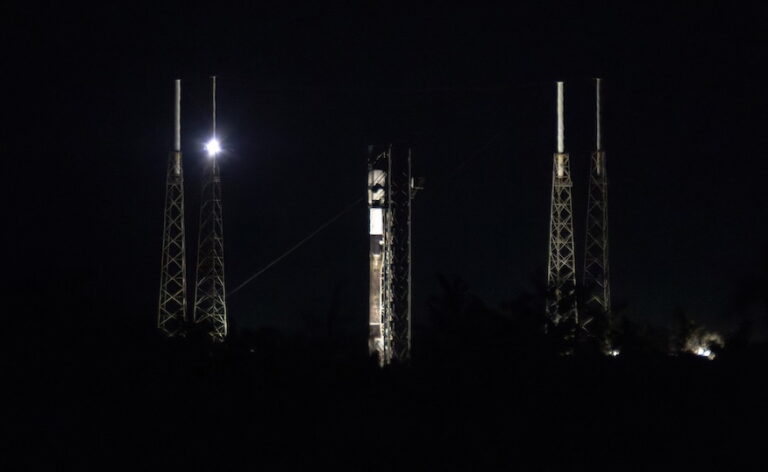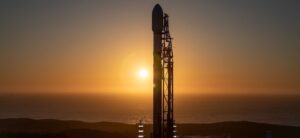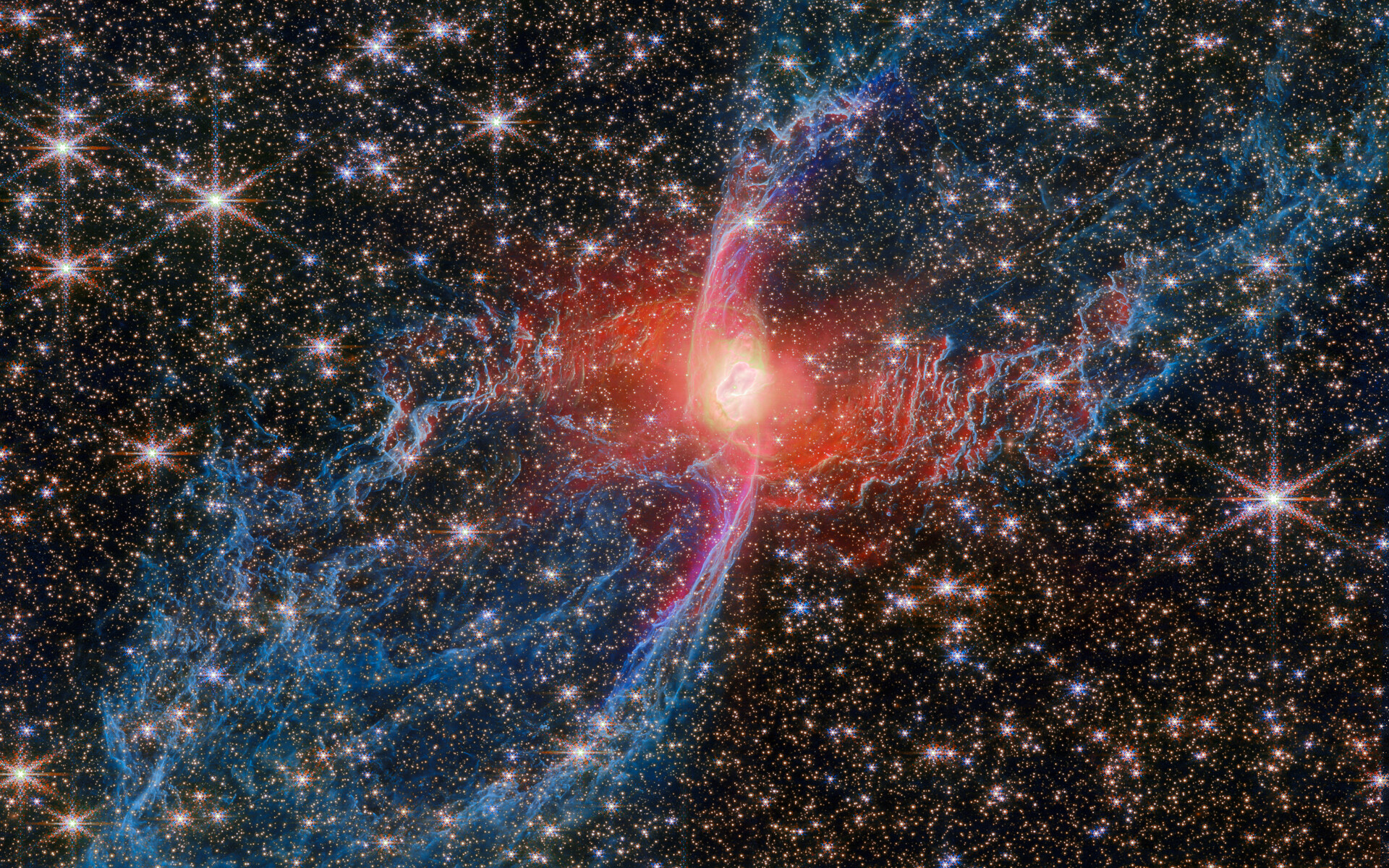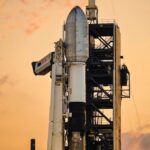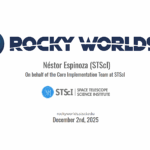Now Reading: Former NASA Administrators urge space agency to rethink plans for Artemis Moon lander
-
01
Former NASA Administrators urge space agency to rethink plans for Artemis Moon lander
Former NASA Administrators urge space agency to rethink plans for Artemis Moon lander
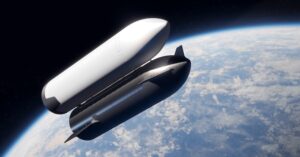
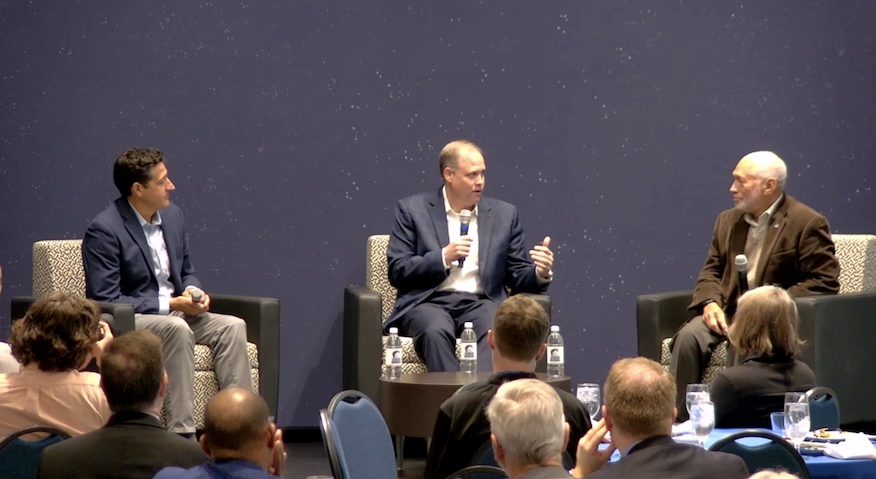
Two former NASA Administrators called on the space agency to rethink its plans to land astronauts on the Moon using SpaceX’s Starship, saying development of the revolutionary vehicle was taking too long and required unnecessary complexity.
Charles Bolden who ran NASA from 2009 to 2017 and Jim Bridenstine who served as administrator from 2018 to 2021 during the previous Trump administration, joined Mike French, the founder of the Space Policy Group, for an open-ended fireside chat, which closed out the American Astronautical Society’s 2025 von Braun Space Exploration Symposium in Huntsville, Alabama.
French steered the former administrators towards the “hot topic” of changes to the Artemis architecture. Specifically, French asked them to weigh in on the Oct. 20 announcement by NASA Acting Administrator Sean Duffy to reopen a competition for the Human Landing System contract that was won by SpaceX back in 2021.
Bridenstine said there needs to be better “alignment” between the political leaders and industry about the goals and the means of execution in order to be successful in returning humans to the Moon in a timely fashion.
“If we’re going to beat China to the moon, we’ve got to have SLS. You know, we have to, we have to use what we know works right now today,” Bridenstine said. “SLS is a proven system. Orion is a proven system. The European Service Module is a proven system. What we don’t have is a lander. That’s what we’re missing. That’s the only thing that we’re missing, is a lander.”
He said the U.S. should consider a marshaling of resources in the spirit of the Defense Production Act of 1950. That was a Korean War-era piece of legislation designed to confer power to the President “to influence domestic industry in the interest of national defense,” according to the official congressional summary.
“We’re going all in to build a landing system as quickly as possible, with a team that would be a small team with authorities, maybe authorities put together by an executive order from the President of the United States, that this is a national security imperative, that we’re going to beat China to the Moon,” Bridenstine said in describing this vision. “And in order to get that done, we need to have a small Skunk Works-type organization that can be in charge and make that lander come to reality.”
Skunk Works is a division of Lockheed Martin that creates classified, bespoke and developmental aircraft.

Bolden took a less China-centric approach, instead citing concerns with the complicated architecture of SpaceX’s approach to a Moon landing. SpaceX’s plan requires an unspecified number of Starship-Super Heavy launches to low Earth orbit to fill a tanker before offloading that propellant to the Human Landing System iteration of the rocket, which will then fly to a near-rectilinear halo orbit (NRHO) around the Moon and wait to dock with the Orion spacecraft before it heads to the lunar surface.
Bolden said one of the main reasons why the last Moon program, Constellation, was cancelled was the unnecessary complexity that he argues has now been reintroduced in a new format.
“I did not recognize the architecture when I came back to thinking about NASA again after Jim (Bridenstine) had left office… and I went, ‘Holy geez! How did we get back here where we now need 11 launches to get one crew to the moon?’ We’re never going to get there,” Bolden said.
He suggested that calling for the mission to be accomplished “by the end of a term” or “before the Chinese” isn’t helpful in terms of motivating the companies involved in the Artemis program. Bolden said it’s incumbent upon NASA leadership to give contractors a clear idea of the financial buy in from the government and then get both an optimistic and a pessimistic timeline so that a realistic target date can be presented to the President.
“I forget which chairman it was who asked me, ‘Well, are you not concerned that the Chinese may beat us to the Moon?’ when we were talking about converting to, transitioning to commercial space,” Bolden said. “I said, ‘Well, to be quite honest, sir, I’m not concerned at all, because there’s only one first time and we’ve already done that. So let’s just get back there and make sure that when we get there we can stay.’”
Bridenstine argued that the current architecture using Starship for Artemis 3 crewed landing means that the “probability of beating China approaches zero rapidly.” He claimed that Duffy’s proposal to reopen the HLS contract for the third Artemis mission was “absolutely the right thing.”
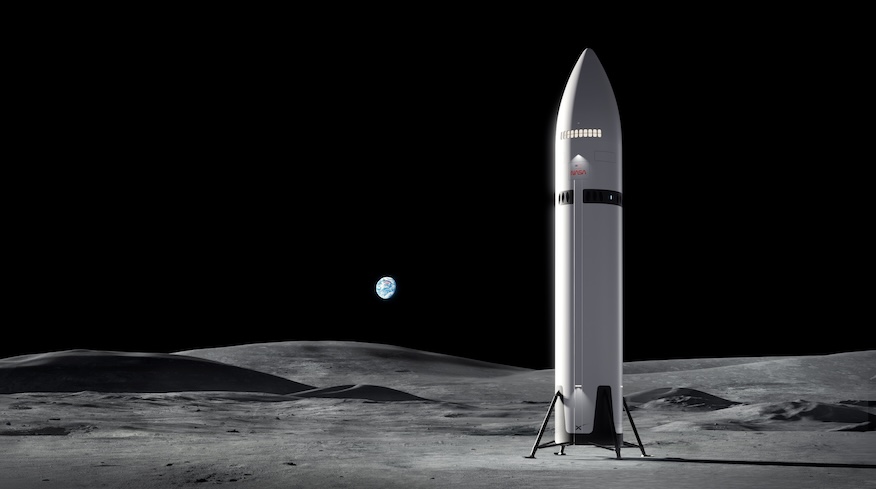
“I want to be clear. I don’t think it’s an either/or. It’s not Starship or this. I think it’s both. And I think if this is a national security imperative, the budget needs to reflect that,” Bridenstine said. “Look, if you starve SLS, or even the Exploration Upper Stage, it’s going to cost a lot more money, and you’re still going to lose to China.
“What you gotta do is you gotta make sure that it’s adequately funded, that ultimately it, when it’s adequately funded, that it’s receiving the resources that it’s supposed to have, and it achieves the objectives that we’re trying to achieve. That’s gotta be the imperative of this country right now.”
He suggested a more Apollo-style route of launching both Orion and the lander on one flight of the SLS rocket equipped with the Exploration Upper Stage being built by Boeing could be a viable option.
“If we just unshackled these capabilities and let them move forward quickly, we’d go fast and it’d be cheaper, as a matter of fact,” Bridenstine said.
New features loading
The Exploration Upper Stage, set to fly for Artemis IV and beyond, will feature new “uplink” capabilities – meaning EUS can operate autonomously or be controlled by the crew in-flight or teams on the ground.
Learn more: https://t.co/ZLDDqDhH7C pic.twitter.com/IcPEeVr5TW
— Boeing Space (@BoeingSpace) October 19, 2023
HLS progress
SpaceX began developing its Starship rocket years before it bid to create an HLS variant for the Artemis program. In the years since receiving a $2.89 billion contract for the Artemis 3 mission, SpaceX launched 11 test flights of its integrated Starship-Super Heavy rocket from Starbase, Texas.
The most recent flight earlier this month marked the final launch of the second major iteration of the rocket and teams are working towards the first flight of Starship Version 3. It will be this version of the launch vehicle that will be used to demonstrate an in-space refueling, which will pave the way for an uncrewed landing demonstration on the Moon.
SpaceX has yet to specify the number of flights it will take to fully fuel a tanker version of Starship in low Earth orbit. However, it has been busy in Florida, laying the groundwork for a trio of Starship launch and catch towers.
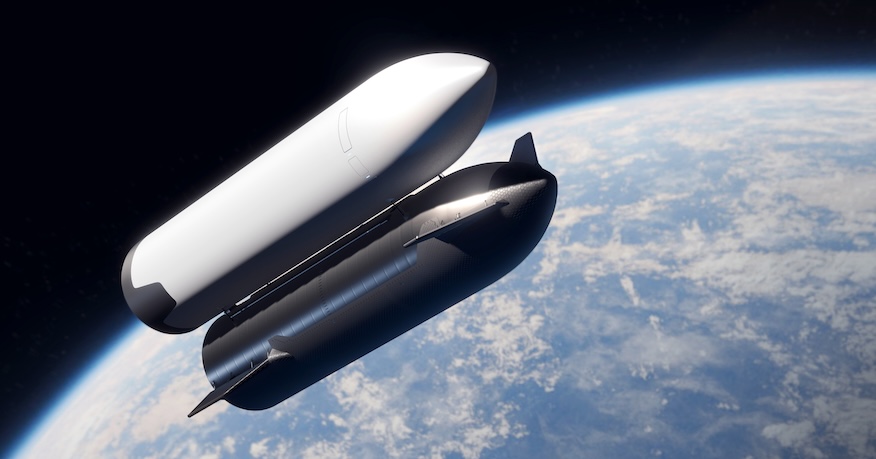
Kiko Dontchev, Vice President of Launch at SpaceX said it would not start launches of Starship in Florida until the V3 design is proven reliable through test flights from Texas.
While SpaceX as a company hasn’t publicly responded to Duffy’s proposal on the Artemis 3 HLS contract, its founder, Elon Musk, took to name calling on his social media site X, formerly Twitter and attacked Duffy’s experience with space.
“Having a NASA Administrator who knows literally ZERO about rockets and spacecraft undermines the American space program and endangers our astronauts,” Musk posted on Oct. 22, two days after Duffy’s announcement on FOX News and CNBC.
Duffy has not publicly responded to Musk’s comments.
Meanwhile, on Tuesday, Jacqueline Cortese, Blue Origin’s Senior Director of Civil Space, said that the company was working towards presenting an alternative for an Artemis 3 Moon landing as it continues work developing their plans for the Blue Moon Mark 2 lander, which is on contract for the Artemis 5 mission.
“Since it’s definitely a competitive environment, I probably won’t say too much about it, but we did just kick off that work with NASA. We’re super excited about it. We have a lot of ideas,” Cortese said.
“I will say it this way. Especially with Mk. 1 and some of our preceding work we’re doing, we have what we think are some good ideas about maybe a more incremental approach that could be taken advantage of for an acceleration-type scenario, which is ultimately still on that end path to sustainability, but is perhaps more incremental in near term.”
Stay Informed With the Latest & Most Important News
Previous Post
Next Post
-
 012024 in Review: Highlights from NASA in Silicon Valley
012024 in Review: Highlights from NASA in Silicon Valley -
 02Panasonic Leica Summilux DG 15mm f/1.7 ASPH review
02Panasonic Leica Summilux DG 15mm f/1.7 ASPH review -
 03From Polymerization-Enabled Folding and Assembly to Chemical Evolution: Key Processes for Emergence of Functional Polymers in the Origin of Life
03From Polymerization-Enabled Folding and Assembly to Chemical Evolution: Key Processes for Emergence of Functional Polymers in the Origin of Life -
 04How New NASA, India Earth Satellite NISAR Will See Earth
04How New NASA, India Earth Satellite NISAR Will See Earth -
 05And Thus Begins A New Year For Life On Earth
05And Thus Begins A New Year For Life On Earth -
 06Astronomy Activation Ambassadors: A New Era
06Astronomy Activation Ambassadors: A New Era -
07SpaceX launch surge helps set new global launch record in 2024














